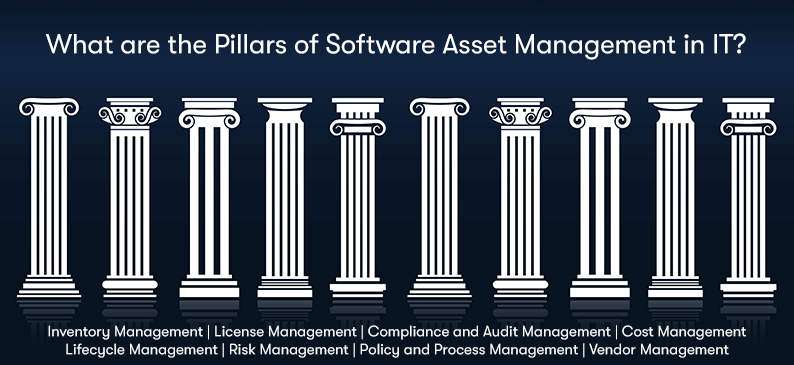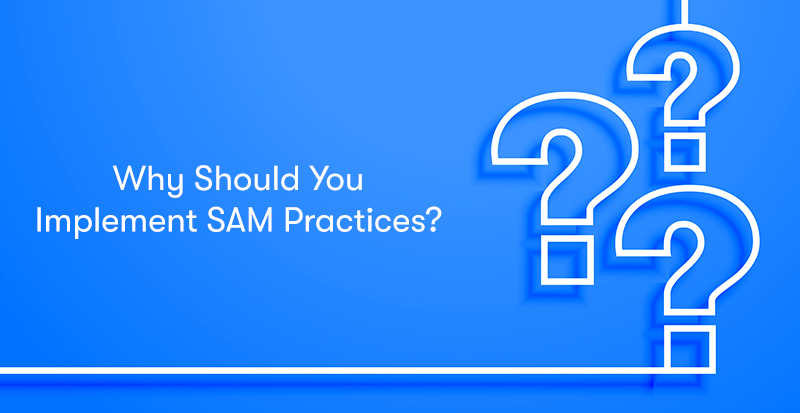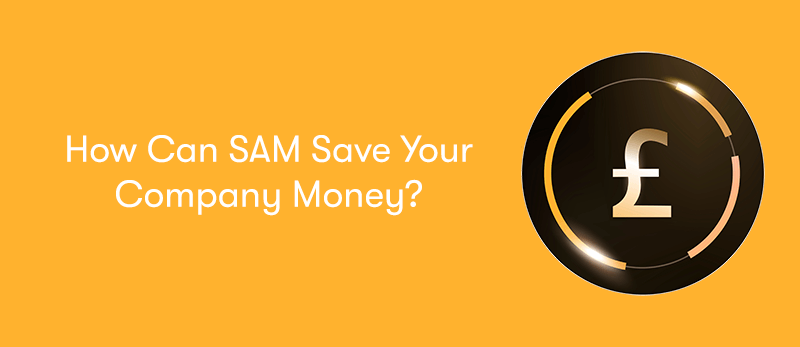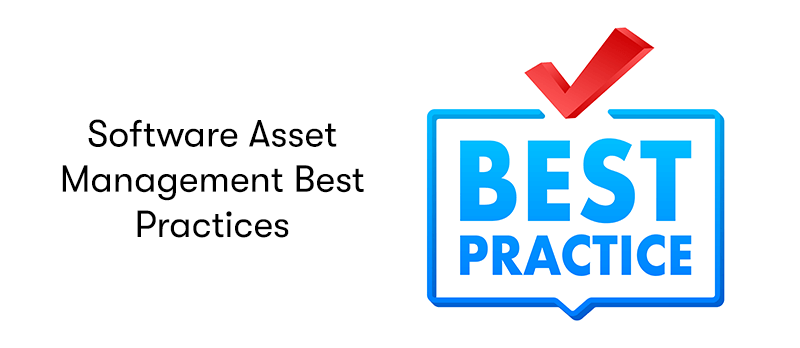Software Asset Management Best Practices
Welcome to our in-depth exploration of Software Asset Management (SAM) Best Practices—a critical, yet often overlooked, component of effective IT management. In an era where software drives business operations, understanding and implementing SAM practices is no longer just an option but a necessity for organisations seeking to optimise their digital assets.
From managing software inventories to ensuring compliance with licensing agreements, SAM encompasses various strategies crucial for minimising risks, reducing costs, and enhancing operational efficiency. As we delve into this topic, we aim to provide valuable insights and actionable strategies to manage your software assets effectively.
Whether you're new to SAM or looking to refine your existing processes, join us in uncovering the best practices that can transform your organisation's approach to software management.
Best Practices for Software Asset Management (SAM)
Software Asset Management is a critical practice for businesses of all sizes to maximise the value of their software investments while minimising risks and costs. Here are some best practices for effective SAM:
Inventory Management
Keep an accurate inventory of all software assets. This includes software installations, licenses, usage rights, and versions. Regular audits and the use of automated tools can help maintain this inventory.
License Compliance
Ensure compliance with the terms and conditions of software licenses. This can prevent legal issues and financial penalties. Understand the different types of licenses (perpetual, subscription-based, user-based, etc.) and manage them accordingly.
Cost Management
Assess the cost-benefit of software investments. This involves tracking the costs associated with purchasing, maintaining, and supporting software and negotiating with vendors for the best terms and prices.
Lifecycle Management
Manage the entire lifecycle of software assets from acquisition to retirement. This includes keeping software up-to-date, planning for end-of-life scenarios, and replacing or upgrading software.
Risk Management
Identify and manage risks associated with software assets. This includes security risks (like vulnerabilities in outdated software), compliance risks, and operational risks (like dependency on obsolete software).
Policy Development and Enforcement
Develop clear policies for software acquisition, use, and disposal. Educate employees about these policies and enforce them to ensure compliance.
Stakeholder Engagement
Engage with all stakeholders, including IT, procurement, legal, finance, and end-users. This ensures that SAM practices align with the broader business objectives and compliance requirements.
Use of SAM Tools
Utilise specialised SAM tools to automate and streamline the management of software assets. These tools can track installations, usage, licenses, and more, offering valuable insights and reports.
Vendor Management
Maintain good relationships with software vendors. This can facilitate better service, support, and potentially more favourable licensing terms.
Continuous Improvement
Regularly review and update SAM processes to adapt to changes in technology, business needs, and regulatory environments.
Implementing these best practices can lead to significant cost savings, improved compliance, reduced risks, and more efficient use of software assets within an organisation.
What are the Pillars of Software Asset Management in IT?

The pillars of Software Asset Management in IT provide a framework for effectively managing and optimising software assets. These pillars are foundational elements that guide organisations in implementing a robust SAM strategy. The key pillars include:
Inventory Management
This is the cornerstone of SAM. It involves tracking and documenting all software assets within the organisation. Accurate inventory management ensures you know what software is installed, who uses it, where it is used, and its current version.
License Management
This involves understanding and managing the licenses for all software used in the organisation. Ensuring compliance with licensing agreements is crucial to avoid legal and financial risks. This includes managing license entitlements, understanding license terms, and ensuring that the organisation is not under-licensed or over-licensed.
Compliance and Audit Management
Ensuring compliance with software licenses and audit requirements is a critical aspect of SAM. It includes preparing for internal and external audits, maintaining documentation, and confirming that software usage complies with licensing agreements.
Cost Management
This pillar focuses on controlling and optimising software expenditures. It involves analysing software assets' total cost of ownership (TCO), identifying underutilised software, and negotiating cost-effective licensing agreements.
Lifecycle Management
This involves managing software from procurement to retirement. Lifecycle management ensures that software is up-to-date, supports the organisation's needs, and is retired or replaced when it becomes obsolete or no longer adds value.
Risk Management
Managing risks associated with software assets is essential. This includes security risks, such as software vulnerabilities, compliance risks, and operational risks.
Policy and Process Management
Developing and enforcing policies and processes for software procurement, deployment, usage, and retirement is crucial. This ensures consistency, compliance, and efficiency in managing software assets.
Vendor Management
Establishing and maintaining good relationships with software vendors is essential. Effective vendor management can lead to better support, favourable terms, and insights into product roadmaps.
Performance and Optimisation
Regularly reviewing and optimising the software portfolio for performance and alignment with business objectives. This involves ensuring that software assets contribute positively to business operations and identifying opportunities for consolidation or upgrades.
Stakeholder Engagement and Communication
It is vital to involve key stakeholders, such as IT, finance, legal, and end-users, in SAM processes. Effective communication ensures that SAM policies are understood and followed across the organisation.
By focusing on these pillars, organisations can create a comprehensive SAM program that reduces risks, ensures compliance, optimises costs, and aligns software assets with business needs.
Why Should You Implement SAM Practices?

Implementing Software Asset Management practices is crucial for organisations for several reasons:
Cost Savings and Optimisation
SAM helps identify underutilised or unnecessary software, allowing for cost savings by terminating surplus licenses or renegotiating license agreements. It can also prevent over-purchasing and help allocate resources more effectively.
Compliance and Audit Readiness
With proper SAM, organisations can ensure they comply with software licensing agreements, reducing the risk of legal issues and financial penalties associated with non-compliance. It also prepares the organisation for both internal and external software audits.
Risk Reduction
SAM mitigates various risks, including security risks from outdated or unauthorised software, operational risks from reliance on unsupported software, and financial risks from compliance issues.
Enhanced Security
By maintaining an up-to-date inventory of software assets, SAM ensures that all software is current with the latest security patches and updates, thereby reducing the vulnerability to cyber threats.
Improved Operational Efficiency
SAM practices lead to a better understanding of the software environment, which helps streamline operations, improve software deployment, and enhance user productivity.
Strategic Planning and Decision Making
SAM provides valuable insights into software usage and needs, aiding strategic IT planning and decision-making. It helps in aligning software investments with business objectives.
Vendor Management and Negotiation Leverage
Effective SAM gives organisations a better understanding of their software needs and usage patterns, which can be leveraged in negotiations with vendors for better pricing and terms.
Lifecycle Management
SAM involves managing the entire lifecycle of software assets, from procurement to retirement, ensuring that investments are maximised throughout their lifecycle.
Increased Transparency and Accountability
Implementing SAM practices increases software usage and expenditure transparency, promoting organisational accountability.
Enhanced Reputation and Corporate Responsibility
Being compliant and efficiently managing software assets positively impacts an organisation's reputation, showing commitment to ethical practices and corporate responsibility.
In summary, SAM practices not only help reduce costs and ensure compliance, but they also contribute significantly to the overall efficiency, security, and strategic management of IT resources within an organisation.
How Can SAM Save Your Company Money?

Software Asset Management can save your company money in several key ways:
Avoidance of Over-Licensing and Under-Utilisation
SAM helps identify unused or underutilised software licenses. Companies often pay for more licenses than they need. Significant cost savings can be achieved by reallocating or terminating these surplus licenses.
Compliance and Avoidance of Fines
Non-compliance with software licensing can lead to hefty fines and legal costs. SAM ensures compliance with licensing agreements, thus avoiding these unnecessary expenditures.
Negotiation Leverage with Vendors
Companies can negotiate more effectively with vendors with a clear understanding of software needs and usage patterns. This can lead to better pricing, discounts, or more favourable licensing terms.
Reduced Costs in Software Purchases and Renewals
By tracking software usage, SAM can prevent unnecessary purchases and renewals. This ensures that the company only buys what is needed and uses what is bought.
Optimisation of Software Investments
SAM provides insights into which software products are most beneficial to the company. This allows for strategic investment in software that offers the best return on investment.
Improved Budgeting and Forecasting
With accurate software usage and needs data, companies can better forecast future software expenses and budget accordingly.
Efficiency in Software Management
SAM streamlines the process of managing software assets, which can reduce the administrative overhead and the costs associated with managing these assets.
Enhanced Security and Reduced Risk
By ensuring that all software is up-to-date and compliant, SAM reduces the risk of security breaches, which can be costly regarding data loss, reputation damage, and recovery expenses.
Lifecycle Management
SAM helps manage the entire lifecycle of software assets, from acquisition to retirement, ensuring that investments are maximised, and waste is minimised.
Improved Resource Allocation
By providing insights into software usage, SAM allows for better allocation of IT resources, leading to more efficient operations and cost savings.
In summary, SAM saves money by optimising software spending, reducing waste, ensuring compliance, improving negotiation positions with vendors, and enhancing overall operational efficiency. These savings can be substantial, making SAM a critical practice for cost-effective IT management.
Final Notes on the Best Practices for Software Asset Management
In conclusion, our exploration of Software Asset Management underscores its critical role in modern IT operations. As we've discussed, SAM extends beyond mere inventory management, encompassing license compliance, cost optimisation, lifecycle management, and risk mitigation. The implementation of SAM practices ensures legal compliance, secures cost savings, and bolsters operational efficiency and strategic IT planning.
By identifying underutilised resources, enhancing vendor negotiations, and maintaining up-to-date software, SAM presents a comprehensive approach to maximising software investments. The importance of this practice in today's digital landscape cannot be overstated, as it stands as a cornerstone for companies aiming to streamline their IT resources, safeguard their digital assets, and, ultimately, drive their business success in an increasingly competitive environment.


